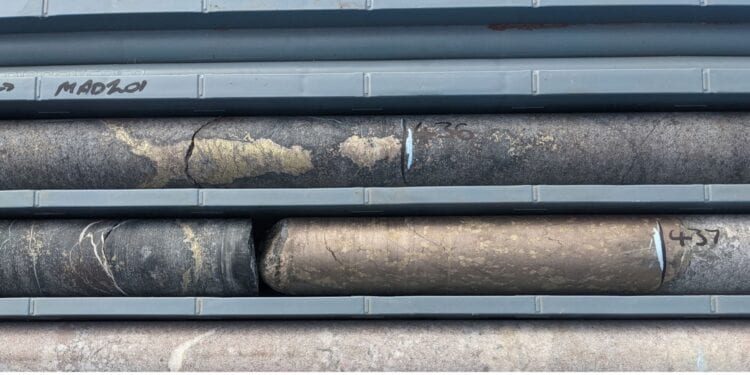Intersects Nickel-Copper Sulphides Down-Plunge Of MAD199 Discovery
St George Mining Limited (ASX: SGQ) has obtained further significant exploration results at its flagship high-grade Mt Alexander Project in the north-eastern Goldfields of Western Australia.
Executive Chairman, John Prineas, said hole MAD201 was a large step-out from the recent MAD199 discovery and has intersected a zone of nickel-copper sulphides in a test for extension of mineralisation at depth.
“The mineralised intersection in MAD201 is an excellent result for the large step-out from the MAD199 discovery as it has identified a potential 125m down-plunge extent of mineralisation,” Mr Prineas said.
“The strong EM conductors identified from the downhole EM survey in MAD201 further support the likelihood of additional mineralisation being present in this area.
“Our systematic exploration approach of the large intrusive mineral system at the Cathedrals Belt is now delivering tangible breakthrough results.
“We are confident that further drilling will continue to grow the footprint of high-grade mineralisation at the Cathedrals Belt coinciding with strong capital markets focus on identifying the next generation of nickel sulphides supplies.”
MAD201 was completed to a downhole depth of 470.1m and tested an area below the high-grade nickel- copper sulphides intersected in MAD199.
MAD201 intersected a 16m thick intrusive unit from 421.95m downhole. From 434.6m downhole, MAD201 intersected 2.4m of nickel-copper sulphides as summarised below. The remainder of MAD201 intersected mainly granitic rocks.
The mineralisation intersected by MAD201 correlated to a weak DHEM conductor identified from the DHEM survey in MAD189, approximately 55m to the east of MAD201. The off-hole DHEM conductor was modelled with conductivity of less than 1,000 Siemens.
“The successful intersection of massive sulphides from this modelled conductor indicates that weak conductors can be a vector to more distant high-grade sulphide mineralisation, and we are undertaking a review of all DHEM conductors identified to date with the benefit of this new finding. Conductors may be modelled with low conductivity because they are on the edge of the range of detectability – typically 50m to 75m around a drill hole,” Mr Prineas said.
As a result of this review, St George expects a number of existing DHEM conductors to be upgraded to priority targets for massive sulphides.
The DHEM survey has identified three very strong off-hole conductors close to the drill hole.
The three conductors are in close proximity to each other, suggesting they are potentially associated with greater volumes of mineralisation.
The three conductors are located up-dip from the MAD201 mineralised intersection and towards the high- grade nickel-copper sulphide intercept in MAD199. This supports the potential for further significant mineralisation along the 125m down-plunge extent between these drill holes.












